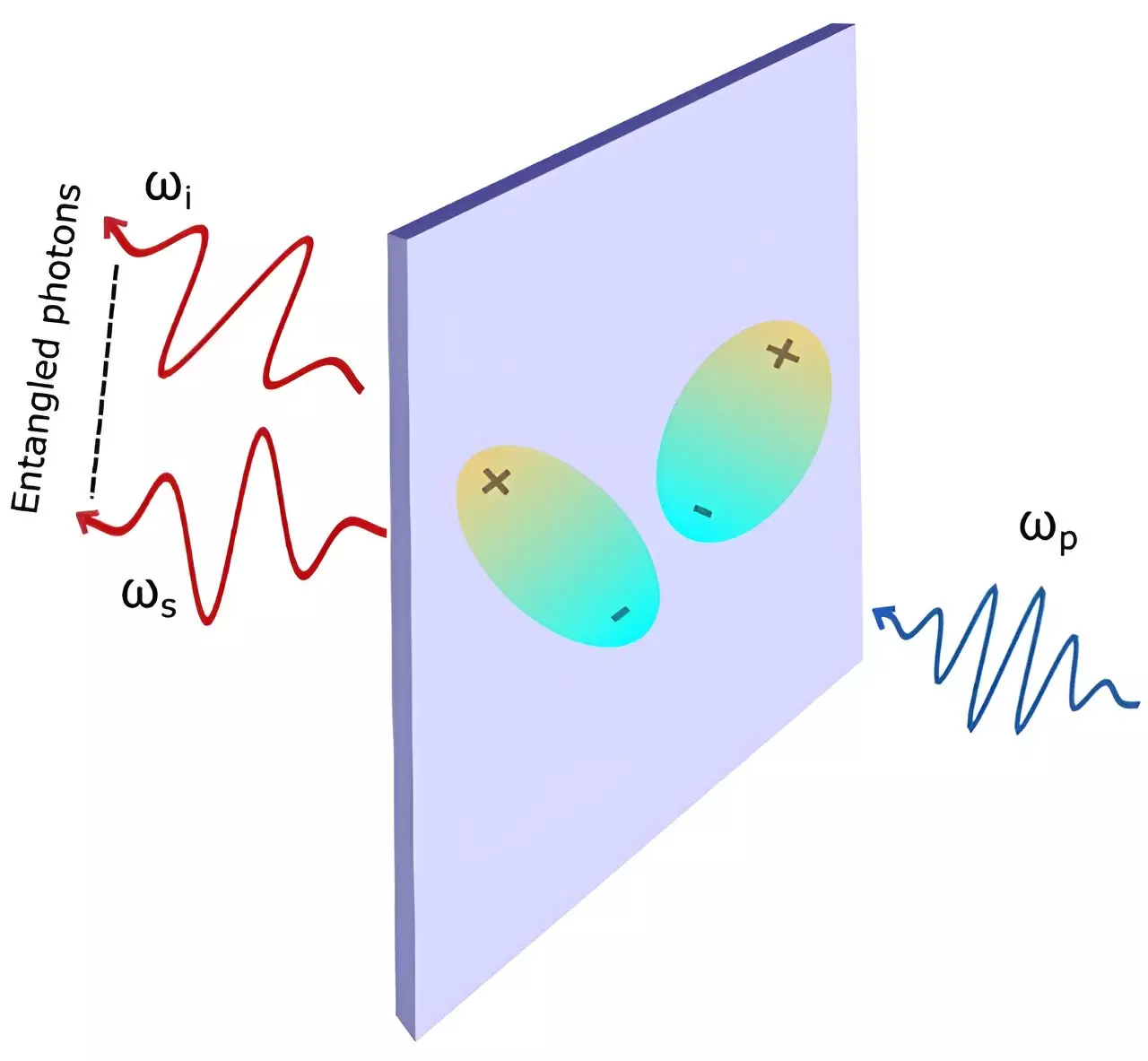Quantum entanglement is a phenomenon that has captivated scientists for decades. It describes the interconnectedness of particles at a quantum level, even when they are separated by vast distances. One specific form of entanglement involves entangled photons, which are light particles generated by shining light on certain types of crystals. This process, known as spontaneous parametric down-conversion (SPDC), is integral to the development of many quantum technologies.
A recent study conducted by scientists from the National University of Singapore has shed light on the importance of excitonic interactions in improving the efficiency of generating entangled photon pairs. Excitonic interactions refer to the relationships between negative and positive charges created when light interacts with a crystal, leading to the formation of excitons. The research team, led by Associate Professor Su Ying Quek, discovered that when these charges are in close proximity, the efficiency of SPDC increases significantly.
The researchers used fully quantum mechanical calculations to predict the impact of excitonic interactions on SPDC efficiency. Dr. Fengyuan Xuan, the lead author of the study, explained that these interactions play a crucial role in promoting transitions between fundamental excitations in the crystal. By considering the proximity of opposite charges, the team was able to demonstrate a marked improvement in SPDC efficiency compared to traditional methods that overlook excitonic effects.
One of the key findings of the study was the potential benefits of using ultrathin crystals in SPDC. While conventional wisdom suggested that thicker crystals were more conducive to generating entangled photons, the researchers showed that ultrathin crystals could actually enhance efficiency due to stronger excitonic interactions. This discovery may alleviate the phase matching problem associated with SPDC and make ultrathin crystals a viable option for producing entangled photons.
By applying their theoretical approach to NbOI2, a layered non-linear optical material, the research team was able to validate their findings through simulations of second harmonic generation (SHG). They observed that excitonic enhancement was particularly pronounced when the frequency of the “pump” beam aligned with specific excitation frequencies in the crystal. This insight not only enhances our understanding of SPDC but also opens up new possibilities for integrating ultrathin materials into quantum-photonic devices.
The study on excitonic interactions in the generation of entangled photon pairs represents a significant advancement in the field of quantum optics. By leveraging the principles of quantum mechanics and exploring the intricacies of excitonic effects, the researchers have paved the way for improved efficiency in SPDC processes. These findings have the potential to drive innovation in quantum technologies and facilitate the development of hybrid quantum-photonic platforms for future applications.


Leave a Reply